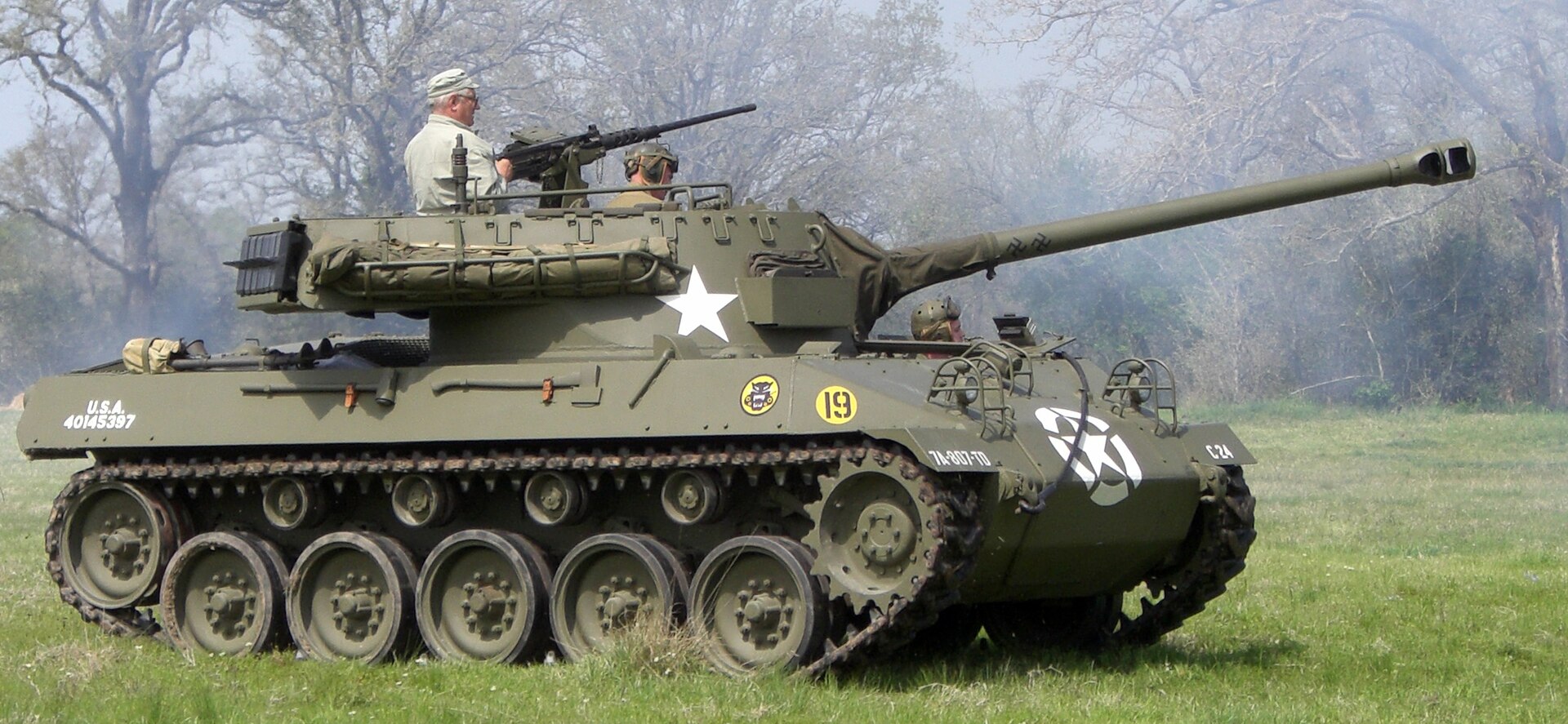Um, excuse me...
It proved to be the fasted tracked vehicle of WW2... US Vehicle Note 24. M18 GMCThe M18 Hellcat tank destroyer was a remarkable vehicle, able to top out at 50mph/80kph. With a Continental radial gasoline engine and a torquematic 3 speed transmission, it achieved 22.5 hp/ton, it willingly sacrificed armored protection for speed. The high hp/ton ratio allowed it to sprint like a greyhound, jumping off at a high speed in a low gear.
 |
| Greyhound in low gear. |
It's torsion bar suspension was not up to the task and its top speed fell drastically off road. The underwhelming performance of the torsion bar suspension lowered the off road performance to 20mph/30kph. There were other problems, including the extreme fuel consumption and high octane requirements. Both of these didn't really matter to the US, which had the advantage of using a good road network in Western Europe and had strong (if overstretched) logistical networks.
But...this ignores the BT series. The Soviet BT-2 used both in the Winter War and the Continuation War had a road speed of 65mph/86kph. Almost certainly, this was the fastest tracked vehicle of WWII. Even off road the BT could reach speeds of 30mph/kph, due to its Christie suspension and awesome 32hp/ton.
Later versions of the BT had a great deal of applique armor. It has to be remembered that the BT were TANKS, not tank destroyers and were not for ambush, but attack. Therefore, while a TD could fire and then move, the BT were supposed to move, stop and fire, making them vulnerable when stopped. The BT-5 saw its top speed reduced to less than 50mph/80kph as a result of the additional weight.
The BT-7, however, depending on which source you believe, also topped 60mph.
The BT series had the advantage of being able to drive without tracks (at least on road) which reduced track wear, and increased reliability and speed. The BT also used a gasoline engine, but did not demand the very high octane required by many western tanks.
It's worth noting here that the need for high octane fuel proved to be a problem for the Lend Lease system. Lend Lease aircraft and tanks did not perform as well for the Soviets until they could begin the large scale importation of Western fuels. The Soviets, of course, had plenty of petroleum, but not access to refining techniques and chemicals that the Western Allies used. This also led to logistical nightmares, which is why units using Lend Lease tanks were limited to specific units (like the Free Poles.) Later, Lend Lease imports were shifted to tanks with special diesel engines.
Soviet sources frequently claim that the Soviets preferred the diesel engines because they were less likely to burn, but this is only partially true. Mostly the problem was that the Soviets lacked the technology to produced high octane fuel required by the aircraft-engine powered US Shermans and Stuarts.
However, clearly, the Chapter H reference is wrong about the Hellcat being the fastest tracked vehicle of the war.



Comments